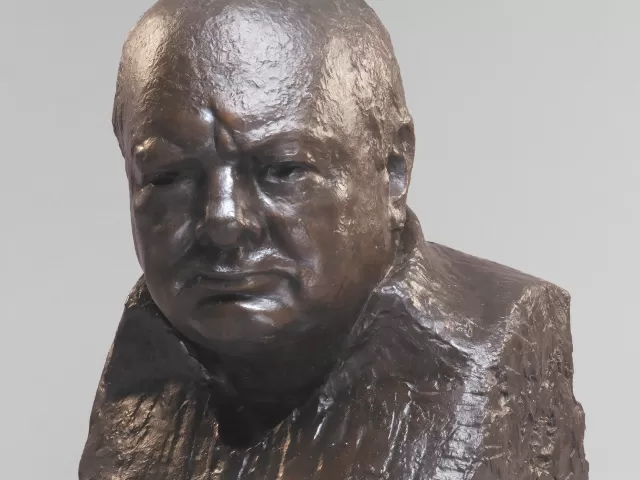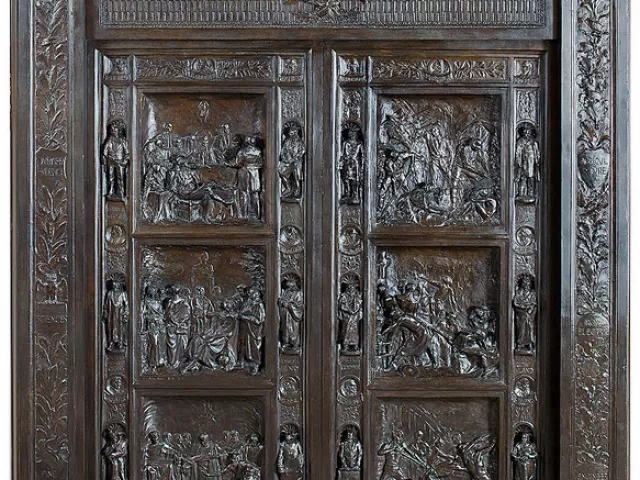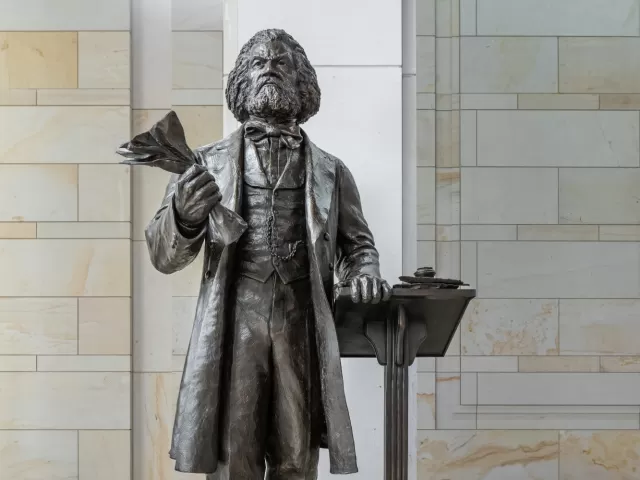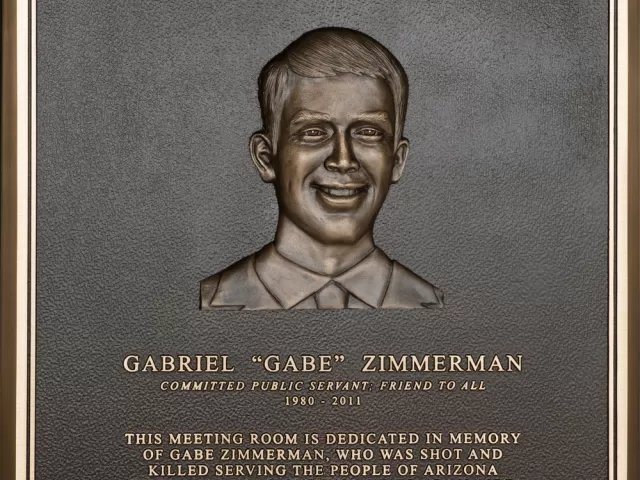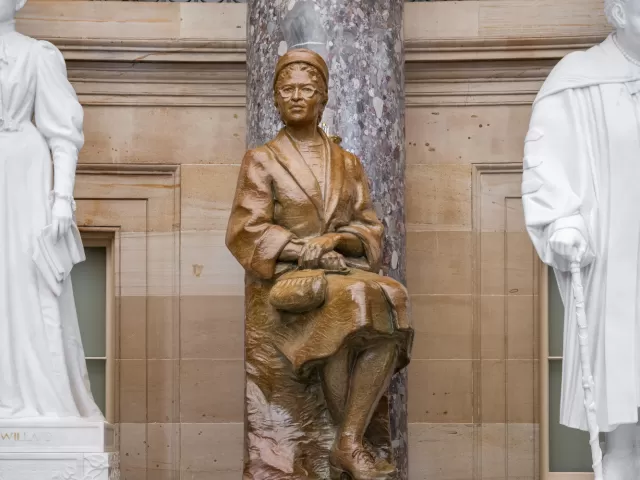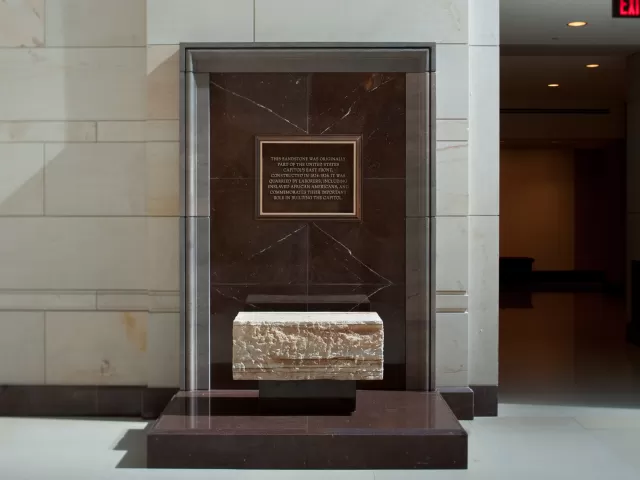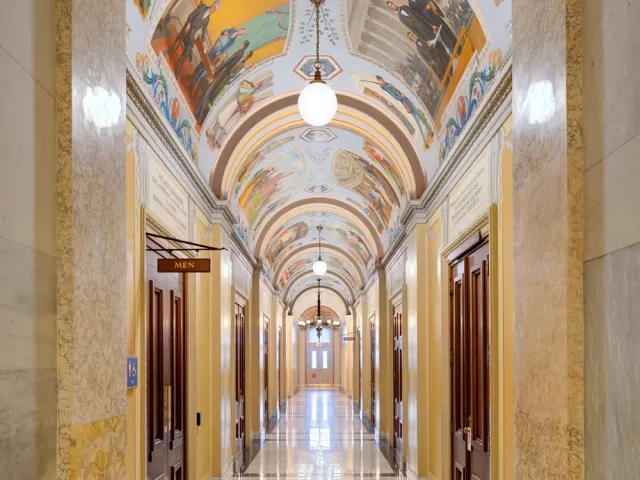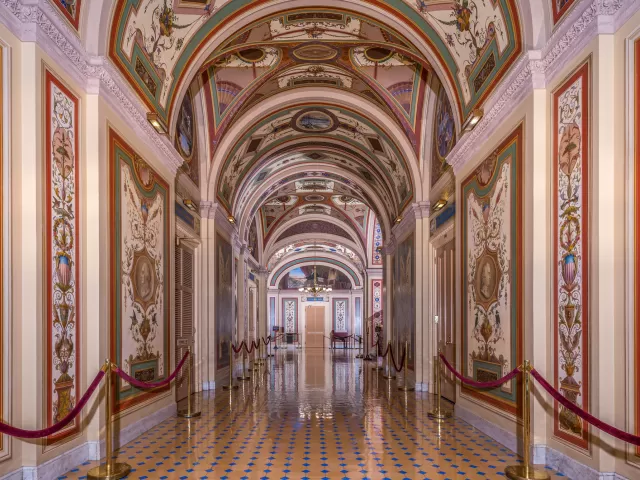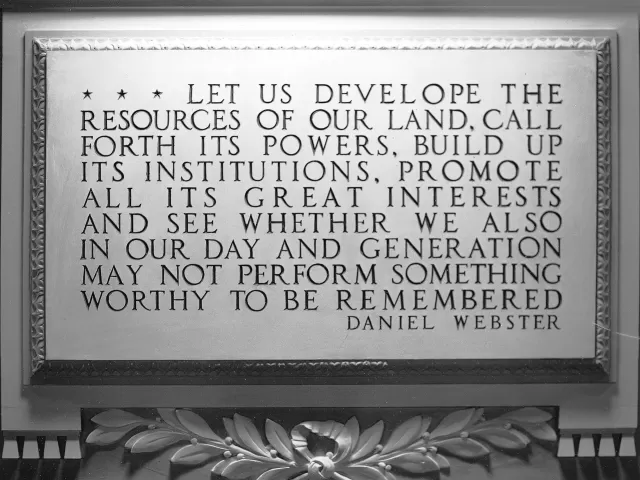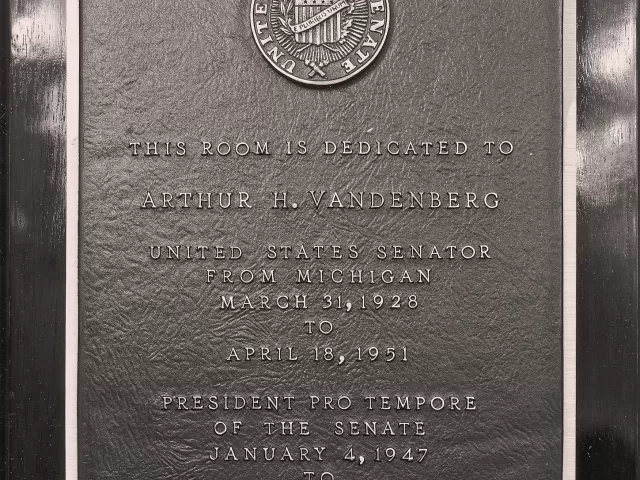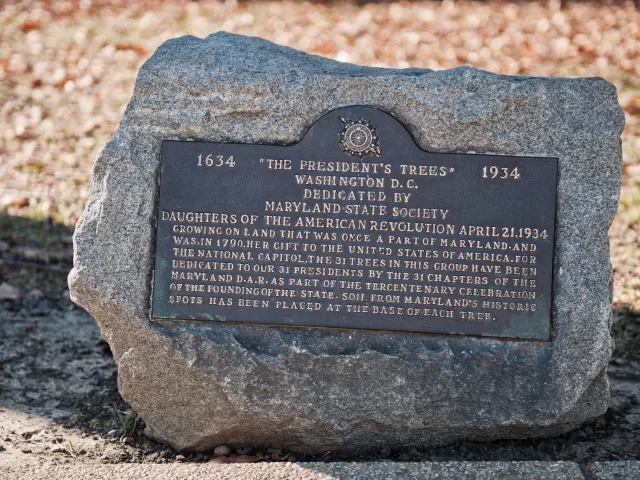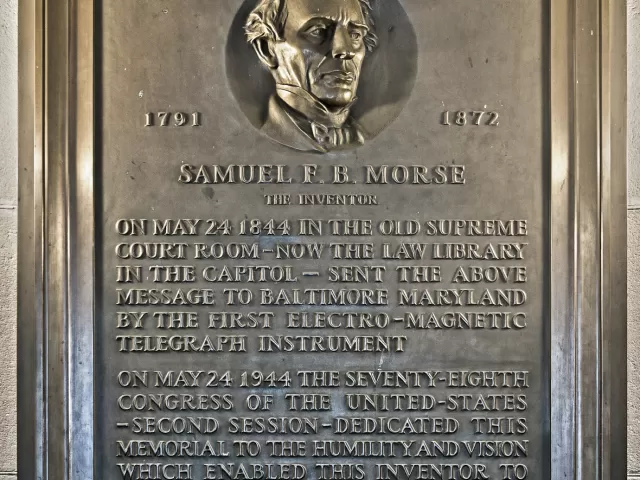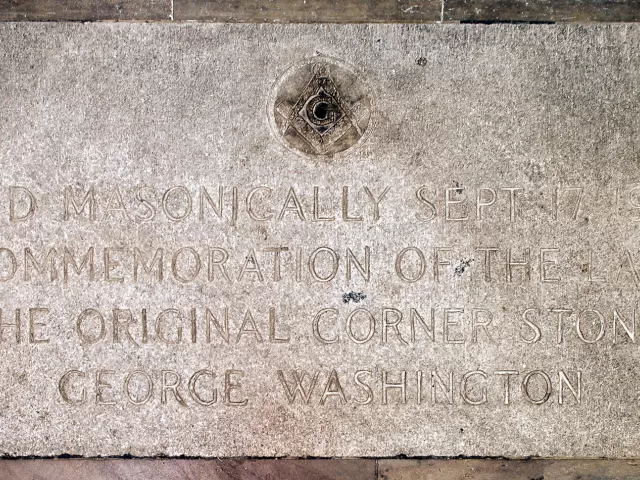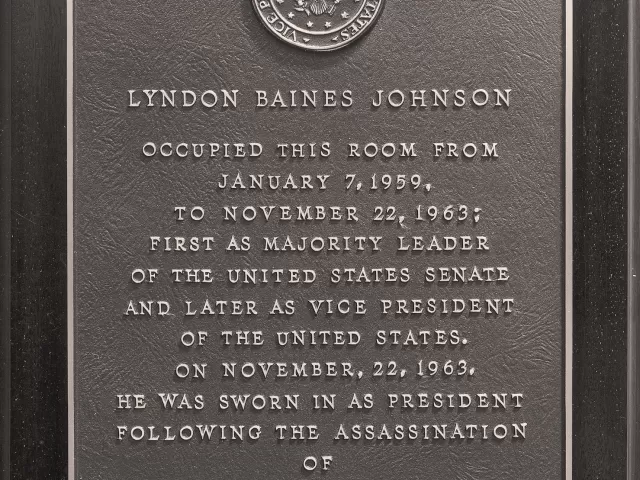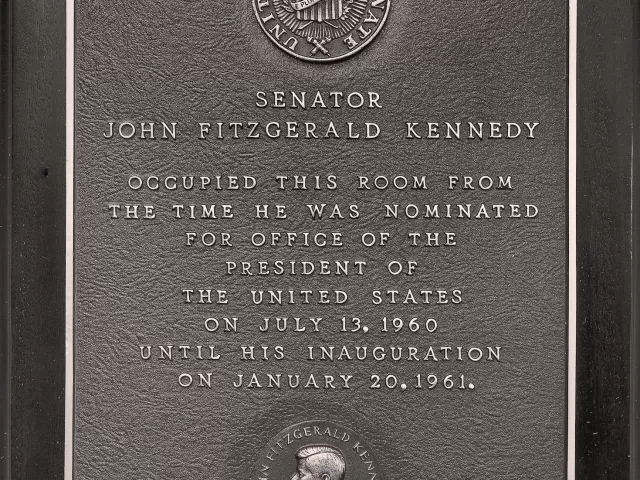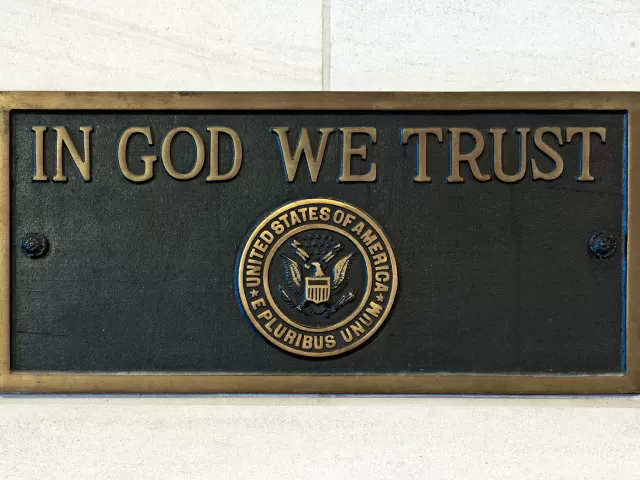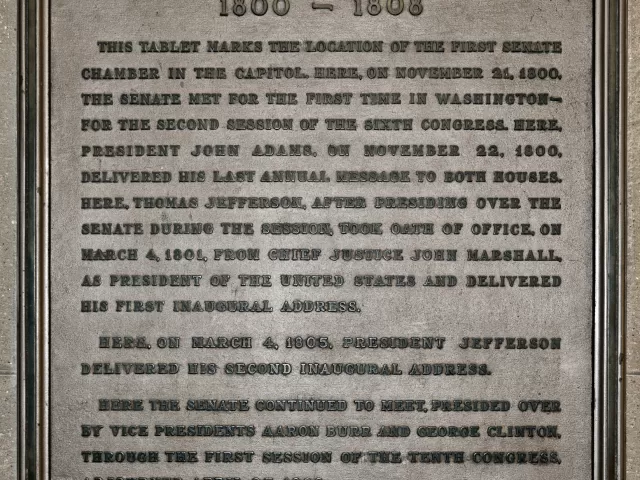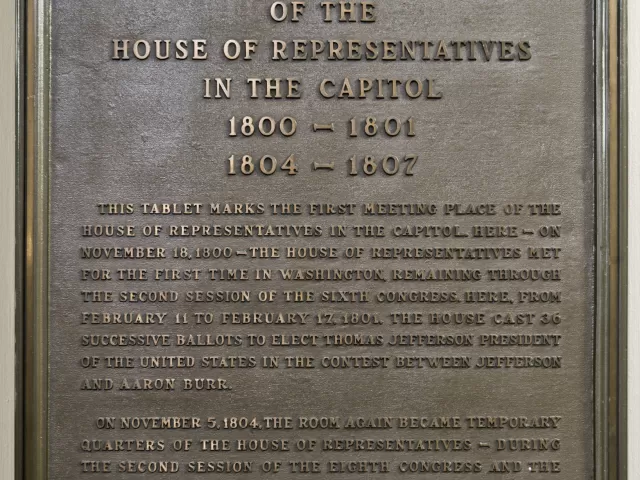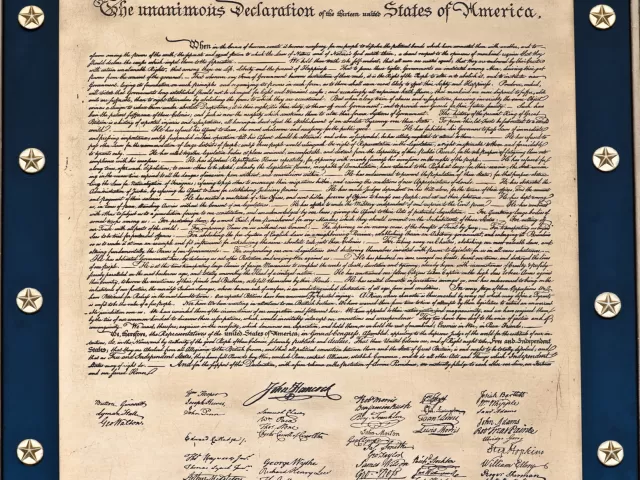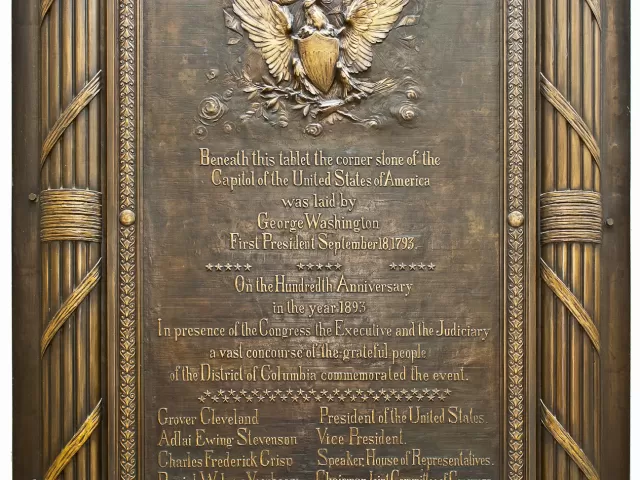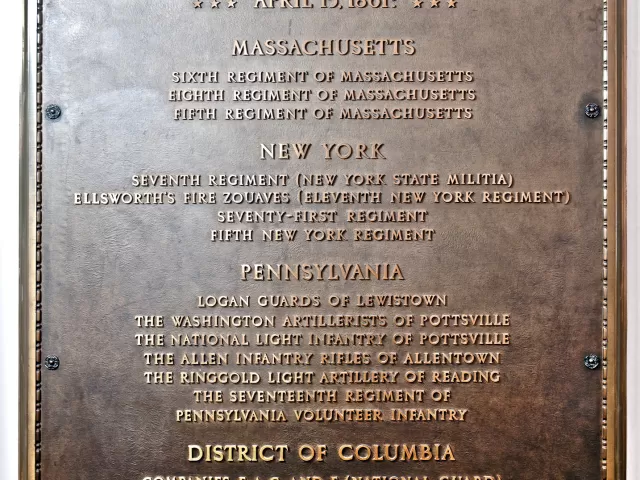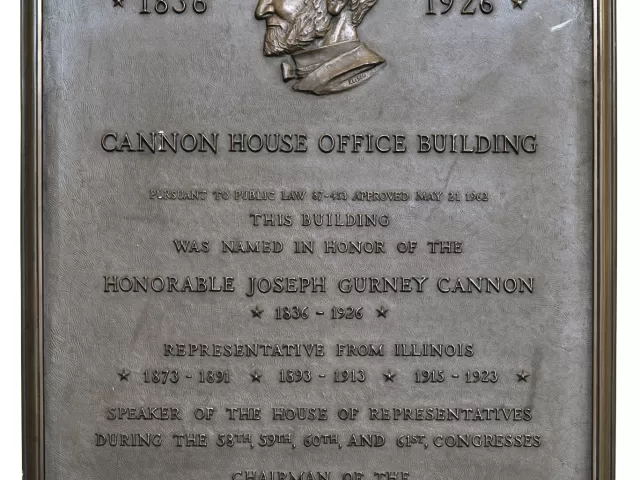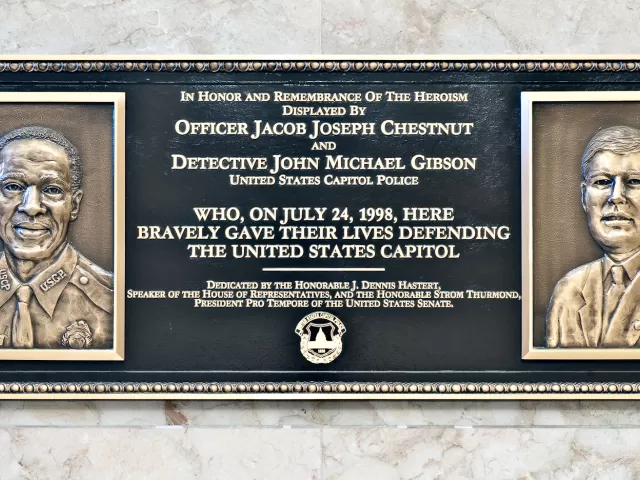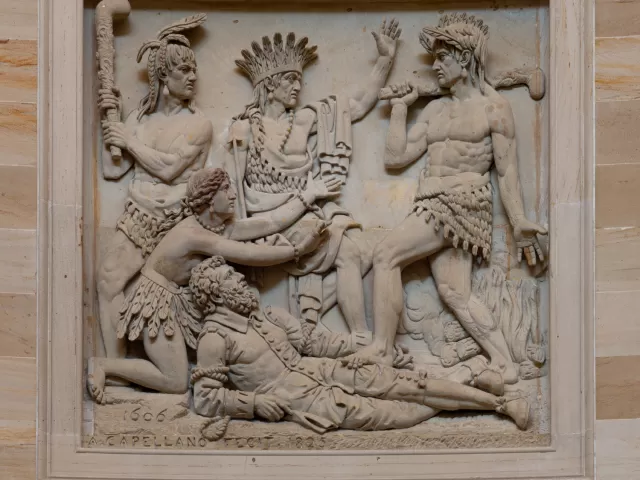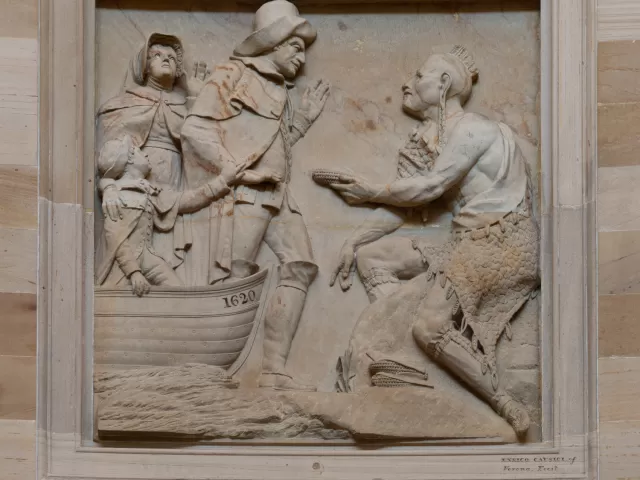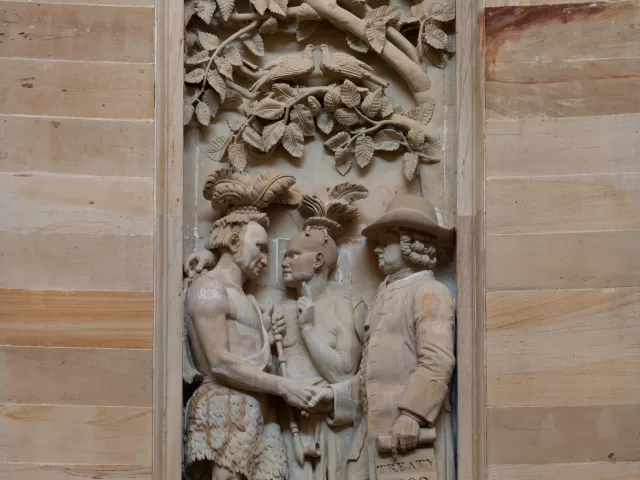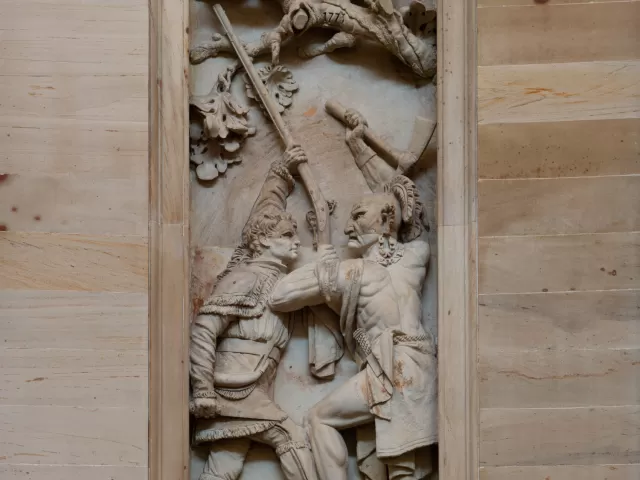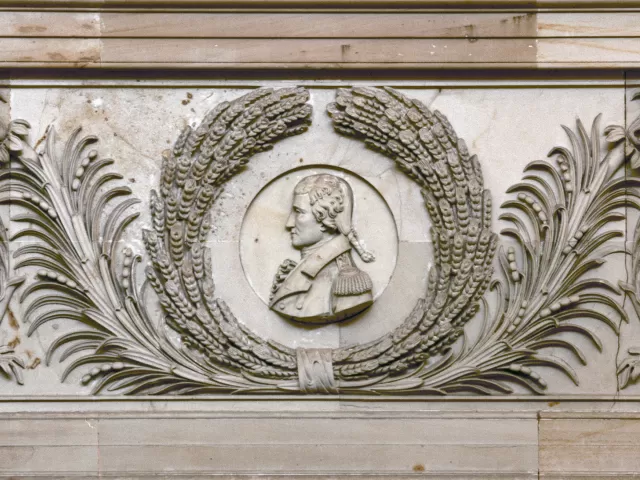Displaying 301 - 330 of 510 Clear
Highlight
The bust of Sir Winston Churchill is the third estate cast made from a life model that was created in the 1950s. The tributes carved on the pedestal are "Statesman, Honorary U.S. Citizen, Defender of Freedom."
Highlight
The bronze Amateis Doors are on display in the House Wing of the U.S. Capitol, across from the Bulfinch stairway near the Memorial Door entrance. The doors are cast in relief ranging from very low to high and consist of a transom, two valves and a surrounding frame.
Highlight
The statue of noted abolitionist Frederick Douglass features him standing beside a lectern and an inkwell with quill pen sits in reference to his work as an author.
Highlight
Rosa Parks' statue was unveiled in National Statuary Hall of the United States Capitol, approximately 100 years after her birth on February 4, 1913. This statue depicts Parks seated on a rock-like formation of which she seems almost a part, symbolizing her famous refusal to give up her bus seat in
Highlight
On Tuesday, February 28, 2012, Congress unveiled a marker to commemorate the important role played by laborers, including enslaved African Americans, in building the United States Capitol. Their contributions were essential for the constructing what would later become known as the Temple of Liberty.
Highlight
Designed by renowned artist Allyn Cox (1896-1982), three corridors on the first floor of the U.S. Capitol's House wing are elaborately decorated with wall and ceiling murals that include historical scenes, portraits and maps related to the development and growth of the United States.
Highlight
The first floor of the U.S. Capitol's Senate wing is elaborately decorated with these wall and ceiling murals.
Highlight
Dedicated by Maryland State Society Daughters of the American Revolution April 21, 1934.
Highlight
On May 24, 1844, in the Old Supreme Court Room, a message was sent by the first electro-magnetic telegraph instrument.
Highlight
This plaque was a gift of the District of Columbia, placed during George Washington Bicentennial in 1932 at the Capitol Plaza fountain terrace.
Highlight
Plaque commemorating the location of the original Library of Congress in the United States Capitol.
Highlight
This tablet marks the first meeting place of the House of Representatives in the Capitol.
Highlight
This plaque identifies specific troops quartered in the United States Capitol during the 1800s.
Highlight
Memorial plaque honoring two members of the U.S. Capitol Police who died in the line of duty.
Highlight
Above each of the four Rotunda doors in the U.S. Capitol are scenes from the history of the American Colonies carved in relief into the sandstone walls. The three sculptors who decorated the Rotunda were employed during the rebuilding of the Capitol after the fire of 1814. Between the historic
Highlight
Above each of the four Rotunda doors in the U.S. Capitol are scenes from the history of the American Colonies carved in relief into the sandstone walls. The three sculptors who decorated the Rotunda were employed during the rebuilding of the Capitol after the fire of 1814. Between the historic
Highlight
Above each of the four Rotunda doors in the U.S. Capitol are scenes from the history of the American Colonies carved in relief into the sandstone walls. The three sculptors who decorated the Rotunda were employed during the rebuilding of the Capitol after the fire of 1814. Between the historic
Highlight
Above each of the four Rotunda doors in the U.S. Capitol are scenes from the history of the American Colonies carved in relief into the sandstone walls. The three sculptors who decorated the Rotunda were employed during the rebuilding of the Capitol after the fire of 1814. Between the historic
Highlight
Above four of the large Rotunda paintings in the U.S. Capitol are decorative panels of wreaths and portraits of early explorers carved in relief into the sandstone walls. The three sculptors who decorated the Rotunda were employed during the rebuilding of the Capitol after the fire of 1814. Between
